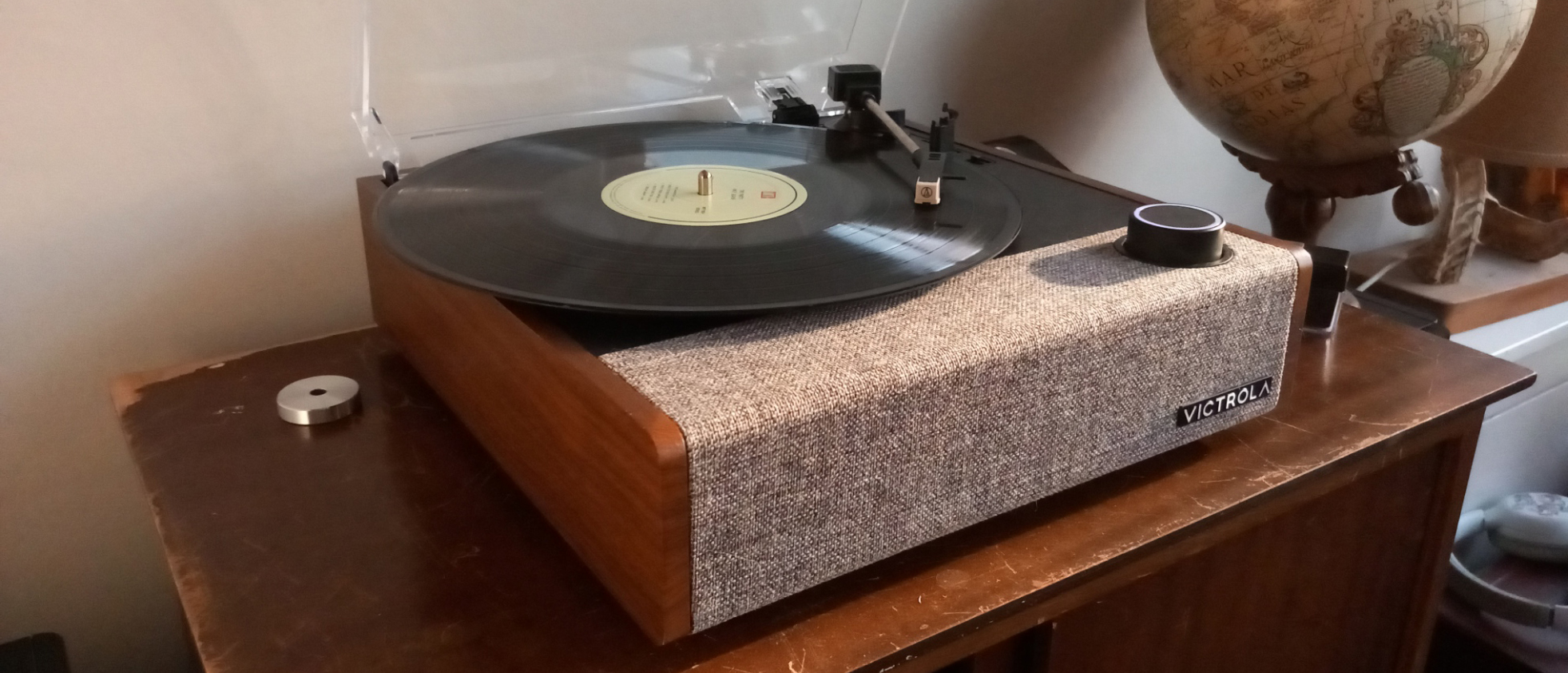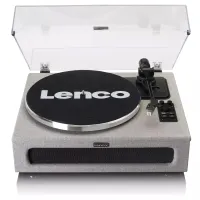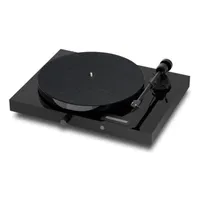TechRadar Verdict
The Victrola Eastwood II is an excellent shout for first-time turntable owners, being an all-in-one turntable with comprehensive Bluetooth connectivity and no learning curve whatsoever; look up ‘plug-and-play’ in the dictionary and find this smart-lookin’ budget turntable as the example image. Some design shortcomings and conspicuously-absent features hamstring its potential, making it less of a shout for those who already have a hi-fi system or some prior turntable-y experience. Nonetheless, it is inarguably a cream-of-crop option in the entry-level space.
Pros
- +
The epitome of plug-and-play
- +
Pleasingly powerful built-in amp
- +
Two-way Bluetooth connectivity
Cons
- -
Lightweight and brittle-feeling
- -
Sometimes-unstable vinyl playback
- -
Missed design opportunities
Why you can trust TechRadar
Victrola Eastwood II: Two-minute review
The Victrola Eastwood II is, in many ways, the ideal first turntable. It is an eminently attractive, well-featured all-in-one hi-fi solution that beats plenty of its competitors on a number of metrics. But is it one of the best turntables for the money? Well, bi-directional Bluetooth connectivity, a mini-but-mighty built-in amp and a truly plug-and-play setup routine together make the Eastwood II a formidable entrant to the entry level sector, at least…
That Bluetooth connectivity is the main draw here, as the Eastwood II is capable of both receiving and sending audio via its respective Bluetooth and Vinyl Stream modes – as well as acting as a conventional player with RCA and headphone aux outputs on the rear. Using each mode is easy to the point foolproof-i-ness, and switching between them as simple as clicking the Eastwood’s single rotary encoder/button.
An Audio-Technica cartridge furnishes this starter turntable with surprising fidelity, too - but, despite these worthy merits, the Eastwood II has its fair share of disappointments. Cheap materials and a flimsy-feeling tonearm system with no counterweight inspire less confidence in the Eastwood II’s handling of your records, and the motor serving the turntable’s plastic platter is prone to instability – with often-audible impacts on the turntable’s sound performance.
Functional elements of the Eastwood II leave you wanting, too, from a dust cover that catches your records to a fundamental missed opportunity with the Bluetooth setting. While a versatile first turntable, this won’t be the one for everyone – particularly not record owners looking to upgrade an existing hi-fi system.
In spite of these gripes, the Eastwood II is a great choice for the teenage or student bedroom – and a smart aesthetic addition to most any space too. At a shade over £100/under $100, it’s also hard to beat budget-wise!
Victrola Eastwood II review: Price and release date
- $99.99 / £119 / €129.99 (around AU$146)
- Launched on July 31, 2024
As intimated by its title, the Eastwood II is a successor model to Victrola’s Eastwood hybrid turntable. The design principles and core functionality remain the same, but material improvements and a sleeker aesthetic set the Eastwood II apart from its predecessor. There are two styles of Eastwood II available as of August 2024 – a striking Black, and a cool mid-century-ish Walnut – the latter of which is the unit reviewed here.
Both colourways sell at $99/£119/€129.99, which is around AU$146, give or take, or a pleasingly cheap price for its build and capabilities. The price goes some way to describing some of the material decisions made here, but equivalently-priced turntables with better tonearms and platters do not have any of the bells and whistles offered by this highly-accessible hi-fi alternative.
Sign up for breaking news, reviews, opinion, top tech deals, and more.
Victrola Eastwood II review: Specs
| Dimensions | 12.7” x 5.3” x 13.1” (WHD) |
| Motor | Belt drive |
| Platter | Plastic |
| Phono preamp | Yes |
| USB | No |
| Speeds | 33.3, 45, 78rpm |
| Stylus | Audio-Technica AT-3600LA |
| Extras | 45rpm record adapter |
Victrola Eastwood II turntable review: Features
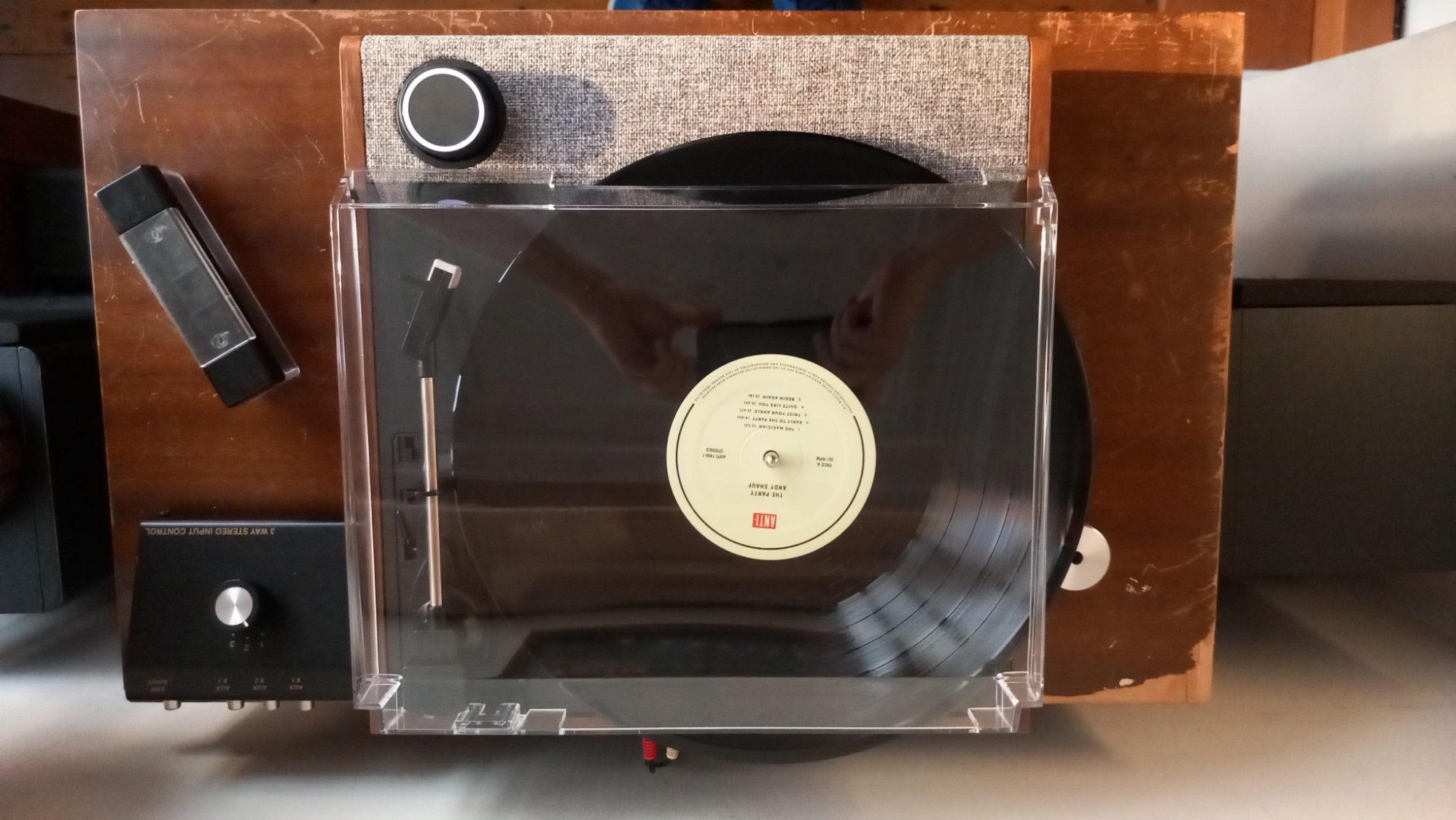
- Three-speed playback
- Near-comprehensive Bluetooth connectivity
- Not as versatile as it could be
Let’s start with the basics: the Eastwood II is a semi-automatic, belt-drive turntable capable of playing 33 1/3, 45 and 78rpm records. The turntable part of it is simple as can be, comprising two selectors for record speed and toggling an auto-stop function (which stops the motor when the tonearm reaches the end of the record), and a lever for the tonearm lift. All these controls are embedded by the tonearm pivot, leaving the record’s base clear and clutter-free – save for a single rotary encoder knob.
This simplicity belies the Eastwood II’s selling point – its near-comprehensive connectivity. Three modes afford you a great deal of versatility for a relatively inexpensive all-in-one unit. Vinyl mode lets you listen to records via its built-in speakers, on headphones via an aux output or on your hi-fi via RCA outputs; Bluetooth mode lets you stream music from your phone or laptop to the turntable; Vinyl Stream mode lets you stream a record from the turntable to a Bluetooth receiver of your choice.
The single rotary encoder knob controls most everything mode-related, and is foolproof in its function; pressing and holding turns the unit on, clicking cycles through the unit’s three modes, and turning the knob controls the volume of the onboard amplifier. Not only is it foolproof, but it’s very satisfying to use indeed. In amongst this connectivity, though, there’s a gap which makes the Eastwood II feel less capable than it is.
The Bluetooth mode of the turntable does not work with its RCA outputs, presumably due to the RCA outs being fed by an always-on phono pre-amp for the record player – meaning you cannot use your wired hi-fi system when streaming audio. The ability to do this might only be meaningful to a select few owners, but to this reviewer, its lack feels almost arbitrary – particularly as enabling the Bluetooth mode to kill the preamp would be a trivial thing to engineer. A little more thought into this Bluetooth mode might have made this a much more seamless hi-fi companion, as well as a self-contained unit.
Of course, this is a self-contained unit, and most will be buying this as a one-and-done solution for playing records. Good, then, that a built-in amplifier and speaker system is plenty loud! For Bluetooth audio, the Eastwood II uses the default A2DP standard; while audiophiles might balk at the lack of aptX utilisation, there are few situations where that additional fidelity would really achieve anything. As such, the Eastwood II is (almost) everything it needs to be.
- Features score: 4/5
Victrola Eastwood II turntable review: Sound quality
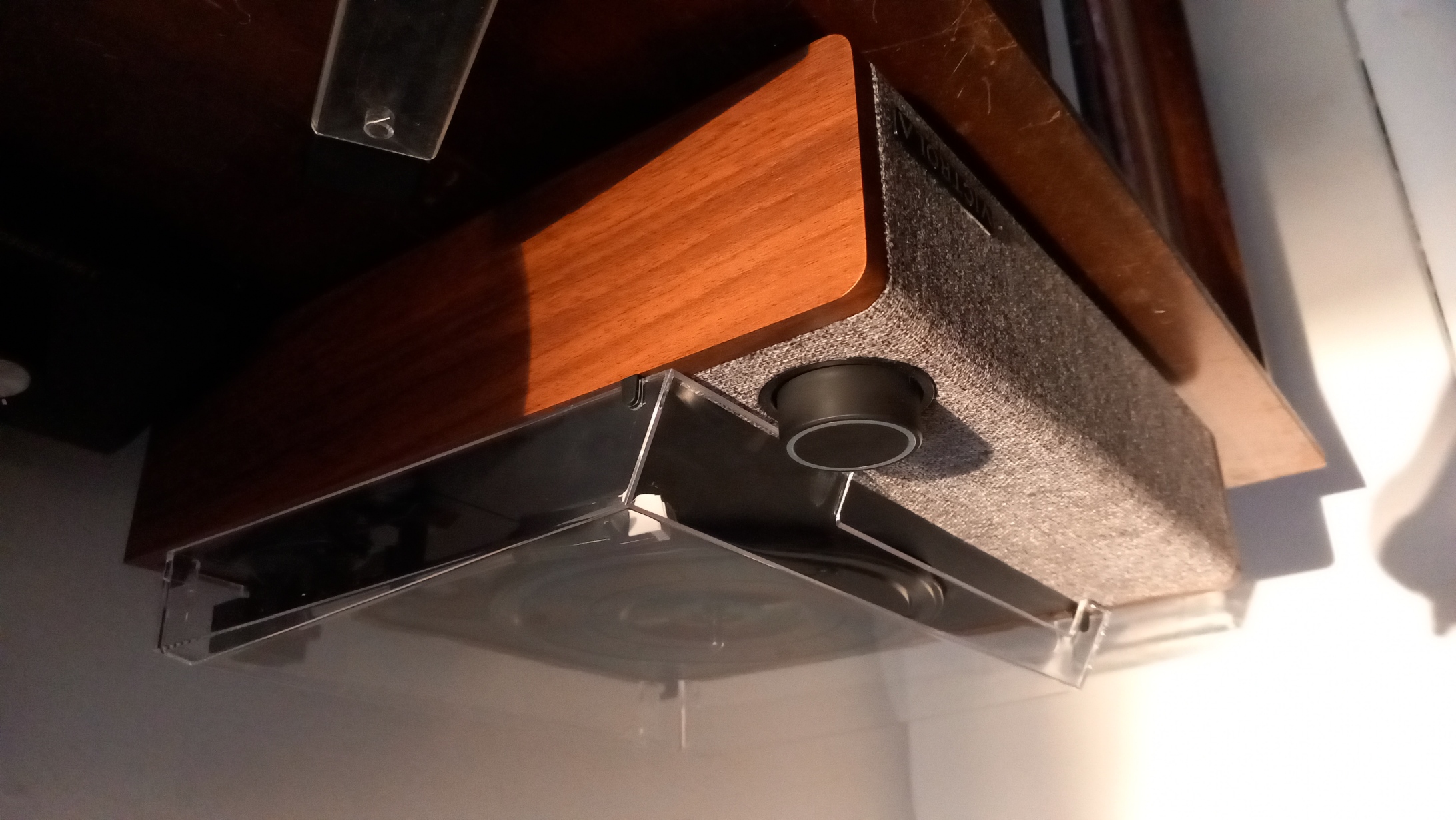
- Great-sounding entry-level cartridge
- Rich mid-range and crisp highs
- Powerful, somewhat boxy internal amp/speakers
In a vacuum, the vinyl-playing bit of the Eastwood II is great for the price. The Audio-Technica AT-3600LA cartridge with which it ships is a cut above those often found on other budget turntables. The difference is best illustrated through a dedicated hi-fi system, via the RCA port on the back – which was my first experience of the Eastwood II, and a joyfully positive one at that.
Wye Oak’s Civilian + Cut All The Wires: 2009-2011 double LP was well-represented, with touching, even tactile softness in the quieter moments of We Were Wealth, and a full-throated bombast to the explosive end of Electricity and the drums-and-thrum of Black Is The Color. There’s middy richness and a crisp treble, and even some solid low-end representation (even if a tad indistinct in places). This representation is hampered somewhat, though, by the sometimes-unstable performance of the turntables motor, which caused some obvious wowing or warbling in places.
Lighter-weight records, like my pressing of Andy Shauf’s The Party, seemed to fare worse, wearing said warble a little more prominently on their respective sleeves. Opening track The Magician, full of enigmatic piano chords and drawn-out clarinets, would sound great if not for seemingly-random dips in playback speed that tugged on those legato notes; closer to the spindle, album closer Martha Sways suffered from a warbly near-vibrato that similarly killed my immersion. In short, this probably isn’t the turntable for active listeners.
As for the built-in amp and speakers, through which most users will do their listening, there is a lot to like. The amp is plenty powerful for filling a room, though there’s little headroom when the volume gets pushed. Nick Drake’s Pink Moon is clear and breathy, with some surprisingly sonorous guitar representation, but the overrepresented upper mids have a tendency to squash and crunch a bit when things get louder. The speakers sound a tad boxy (perhaps an unavoidable characteristic for smaller all-in-ones of the Eastwood II’s ilk), but a snappy high end and bloomy low end create a surprisingly fulsome version of this boxiness.
As for headphone listening, there’s a real sense of clarity in the reproduction – albeit at the expense of some bassy heft, which is found wanting when I revisit Wye Oak’s Black Is The Color. All round, the Eastwood II is clearly a capable budget unit, with some pleasant surprises that are unfortunately caveated by some not-so-pleasant limitations.
- Sound quality score: 3/5
Victrola Eastwood II turntable review: Design

- Swanky mid-century-ish looks
- Smart dust lid, imperfectly executed
- Brittle-feeling in places
Eschewing the all-too-common faux-leather-and-shiny-bits design of throwback suitcase record players, the Eastwood II chooses modernity for its aesthetics – at least, a form of mid-century modernity, with a charming fabric front and some wood-effect side panels that together look effortless.
Functionally speaking, the Eastwood’s design is both smart and simple. There’s no convoluted setting-up, nor any real confusion as to how to get it working straight away; it’s the most plug-and-play it could possibly be, and great for it too. However, despite how easy it is to get installed and in use, the Eastwood is still hamstrung by some design oversights that make daily use less-than seamless. One major gripe relates to the turntable’s lid.
The smart part is that, since 12” records extend beyond the smaller size of the unit’s base, the lid has cut-outs to accommodate these extraneous segments. This is, in principle, a nifty flourish that makes playing records with the lid closed feel sleek, even dynamic. But the rear cut-out isn’t deep enough, and catches the back of your 12”s whenever you try to place them; something nifty in principle becomes frustrating in practice.
To Victrola’s credit, you can tell they’ve attempted to fix this already – the rear cut-out is deeper than the others, to create more room for placing records – but it sadly wasn’t quite enough. This is something of a theme with the Eastwood II, where great ideas and intentions are met with unfortunate execution.
Though the Eastwood II boasts upgraded materials from its predecessor model, there are still inexpensive plastics in use, which make for a brittle feel. This is most obvious when handling the tonearm, which is at once flimsily light in-hand and heavy-handed on-vinyl. A heavier, counterweighted tonearm would inspire more confidence, but seems a tall order at this price and with this many internal features.
- Design score: 3.5/5
Victrola Eastwood II turntable review: Value
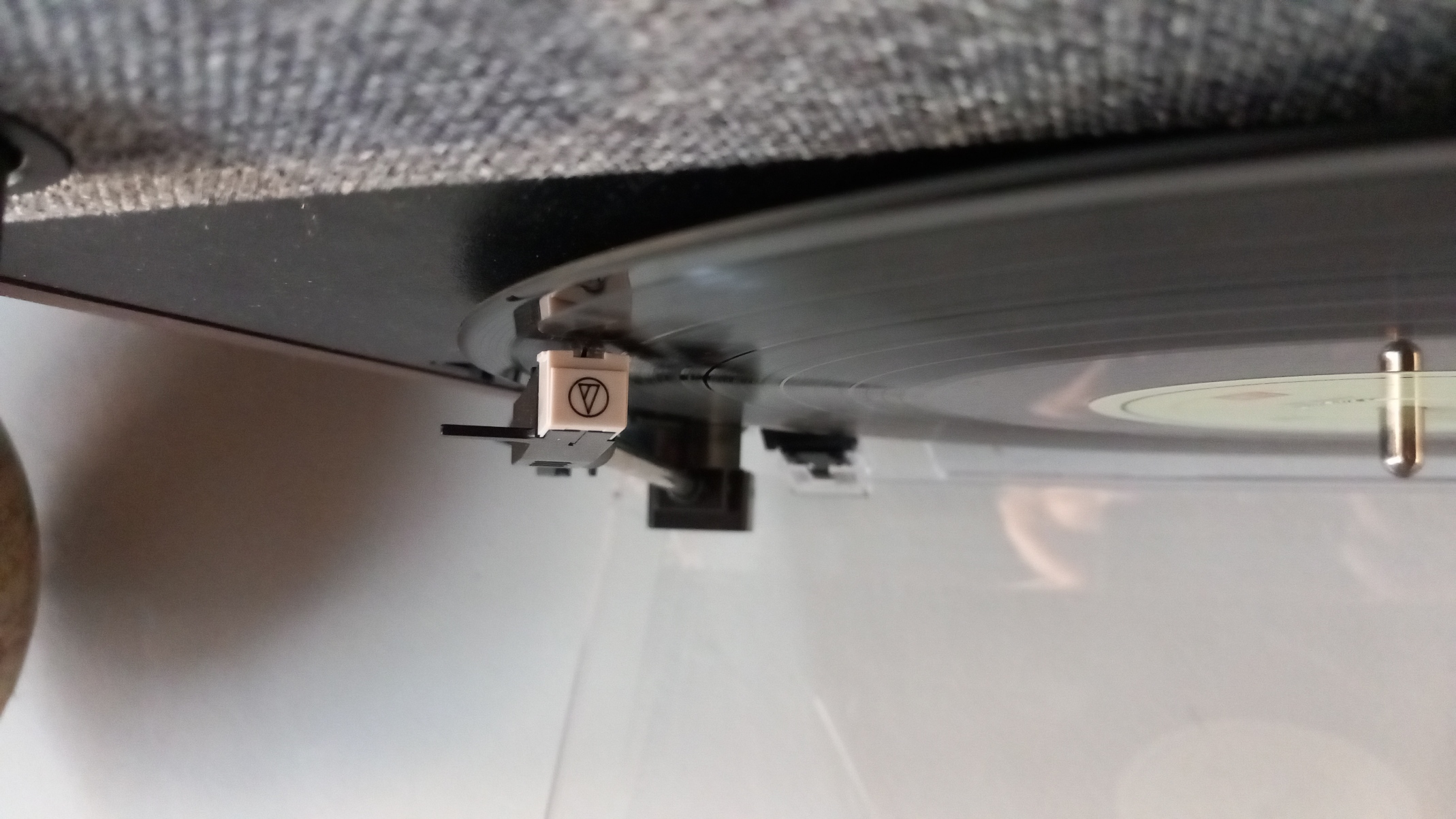
- Beats many equivalent models for sound quality
- Great jumping-on point for new vinyl owners
- Tough to justify for certain consumers
The Victrola Eastwood II is on the cheaper side of the Bluetooth turntable spectrum, and cheap even against a majority of all-in-one turntable solutions on the market. For those that beat it on price, the Eastwood II beats them handily on sound, thanks to that Audio-Technica cartridge and capable internal amplifiers. It’s also extremely easy to use, and hence a great jumping-on point for those new to vinyl (or even just after a bedroom speaker system).
However, the three-figure price point might be a tad tough to justify for slightly more seasoned buyers. Little oversights in design and function add up, rendering this visibly-sleek tabletop hi-fi a little less sleek to use. Also, the tonearm’s cheap construction can be found in units half the Eastwood II’s price.
- Value score: 3.5/5
Should you buy the Victrola Eastwood II?
| Attributes | Notes | Rating |
|---|---|---|
| Features | This multi-modal music-playing machine has excellent accessibility, only falling short on versatility in some small ways. | 4/5 |
| Sound quality | Records are reproduced surprisingly well through hi-fi, though mechanical shortcomings unfortunately overshadow its rich midrange. | 3/5 |
| Design | A posh look and some material upgrades win this turntable some serious points, but small design missteps impact its ergonomics. | 3.5/5 |
| Value | This turntable is a great get for its price, particularly as a first-ever record player; older hands might not find it so easy to justify. | 2.5/5 |
Buy it if...
You’re looking for your first turntable
It’s the perfect introduction to playing records, being simple to use and great-sounding for its price – better, indeed, than similar players in its price bracket.
You don’t have a hifi system yet
Everything’s in-house here! No need for separate amps or speakers, and not even any need to cables to play music from your phone or computer.
Don't buy it if...
You’re an active listener
This player’s warble and wow are difficult to ignore, particularly on cheaper pressings.
You want an all-in-one addition to your hi-fi
If you’ve already got a hi-fi amp, you can get a better stand-alone record player at this price – besides which, a missed opportunity with the Bluetooth setting means this won’t act as a receiver for your hi-fi.
Victrola Eastwood II turntable: Also consider
| Row 0 - Cell 0 | Victrola Eastwood II | Lenco LS-410 | Pro-Ject Juke Box E1 |
| Dimensions | 12.7” x 5.3” x 13.1” (WHD) | 16.7” x 7.6” x 14.2” (WHD) | 16.3” x 4.6” x 13.1” (WHD) |
| Motor | Belt drive | Belt drive | Belt drive |
| Platter | Plastic | Aluminium | ABS Polymer) |
| Phono preamp | Yes | Yes, switchable | Yes |
| USB | No | No | No |
| Speeds | 33.3, 45, 78rpm | 33.3, 45rpm | 33.3, 45rpm |
| Stylus | Audio-Technica AT-3600LA | Audio-Technica AT-3600 | Ortofon OM 5E |
| Extras | 45rpm record adapter | No | 45rpm record adapter, stylus pressure gauge, gloves, allen key |
Lenco LS-410
Lenco’s LS-410 is a similar kind of all-in-one turntable, albeit lacking Victrola’s fun Vinyl Stream technology. For a little more money (and for sacrificing this essential aspect), you can have a Bluetooth-enabled turntable with a slightly more stable platter and a counterweighted tonearm.
See our full Lenco LS-410 review
Pro-Ject Juke Box E1
While significantly pricier than the Eastwood II, the Pro-Ject is much closer to a bona fide home hi-fi – with a solid platter, stable belt-drive system, powerful built-in amplifiers and a Bluetooth receiver that doesn’t discriminate.
Read our full Pro-Ject Juke Box E1 review
How I tested the Victrola Eastwood II turntable
- Tested for 4 weeks, as primary turntable in living room
- Tested with Cambridge Audio amp and Celestion speakers, Audio-Technica headphones and a Soundcore Bluetooth speaker
The Eastwood II was put through its paces via my tried-and-true Cambridge Audio Azur 540r amplifier, which feeds two Celestion F1 bookshelf speakers. For headphone listening, I trialled the unit with a wired pair of Audio-Technica ATH-M40xs, and for its Vinyl Stream connectivity I paired it with a Soundcore Motion 300.
The records I chose to listen with are records I know back-to-front, meaning I can fairly evaluate differences in sound and playback – both with respect to different turntable modes, and with respect to other turntables.
- First reviewed: August 2024

James Grimshaw is a freelance writer and music obsessive with over a decade in music, audio and tech writing. They’ve lent their audio-tech opinions (amongst others) to the likes of Musicradar, Louder, Guitar.com and the London Evening Standard – before which, they interviewed indie glitterati for online music publications a-many. When they aren’t blasting esoteric music around the house, they’re playing out with esoteric artists in DIY spaces across the country; James will evangelise to you about obscure late-2000s records until the sun comes up.
